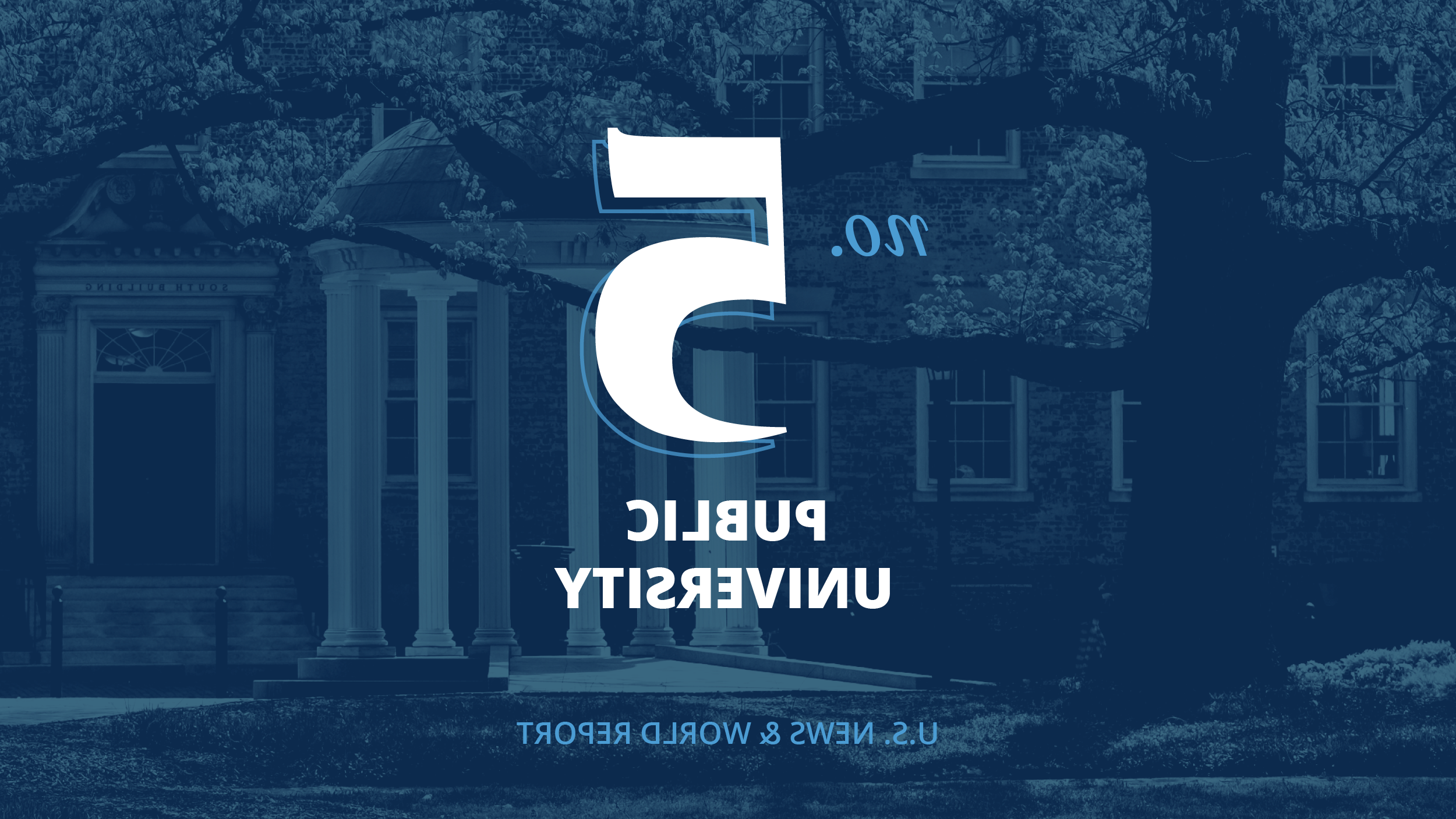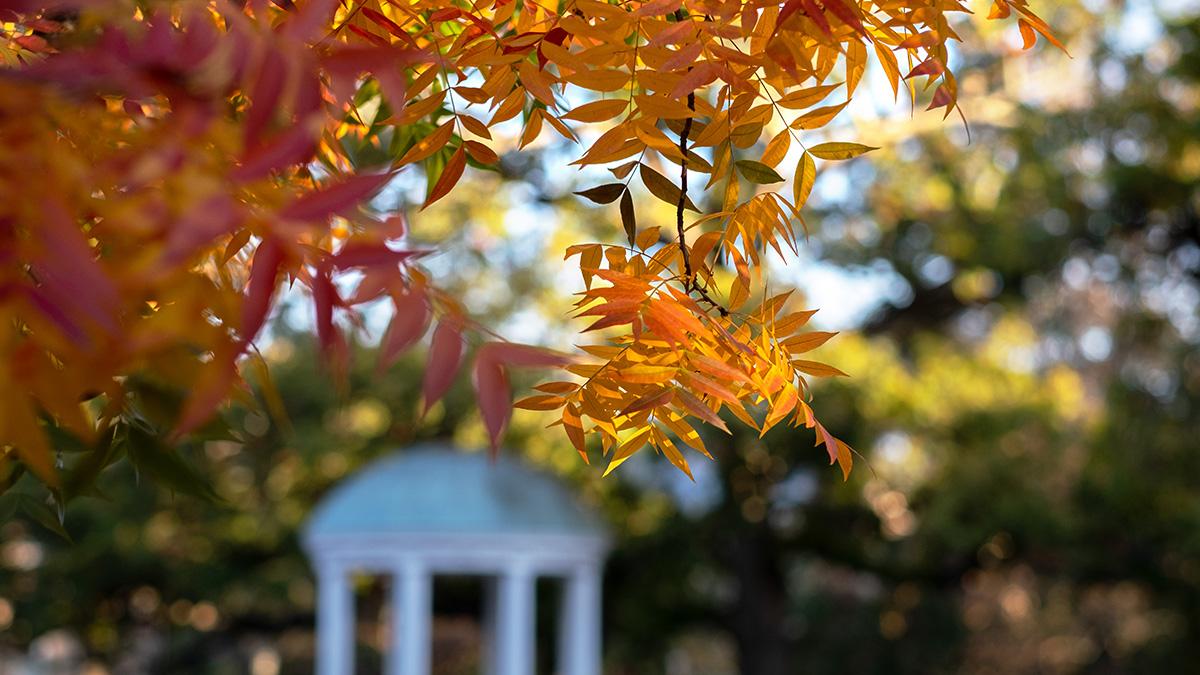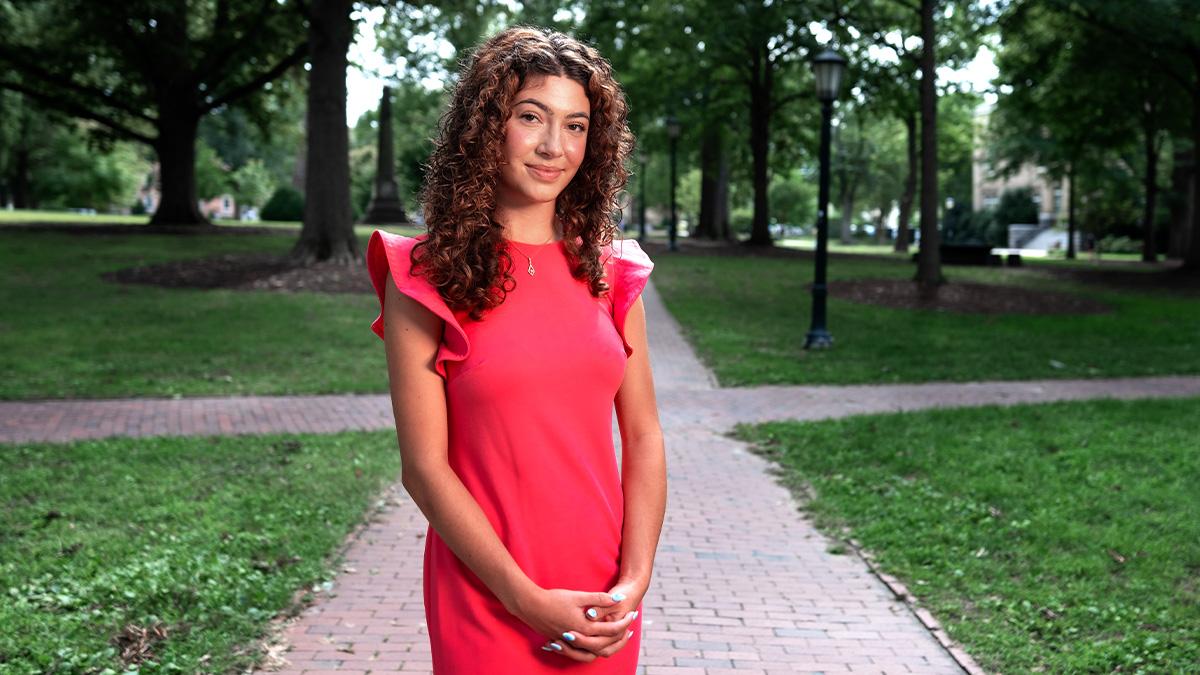Tar Heel team begins preservation of ancient Nepal temple
Religious studies scholar and computer scientist want to create 3D model of 1,500年历史的佛教圣地.

在一个开创性的倡议中, a team from Carolina’s 文理学院 traveled to Nepal in October to begin the digital preservation of one of the country’s most venerable religious shrines. 1,有500年历史的斯瓦扬布寺, a jewel of Buddhist heritage perched atop a hill in the Kathmandu Valley, 尼泊尔是联合国教科文组织世界遗产之一吗.
Leve劳伦, ,宗教研究副教授 吉姆·马哈尼, a re太阳城娱乐城 scientist in the computer science department, started the long process of capturing the data needed to create an accurate 3D model of the entire temple complex. One of the project’s goals is to allow UNC-Chapel Hill students a chance to visit Swayambhu in virtual reality.
The project leverages the distinct skill sets of Leve and Mahaney to both access and capture this sacred site. Leve and Mahaney are using a three-pronged data capture approach, 结合三维激光扫描, photogrammetry and drone photography to create three separate models of the temple complex. The three models will then be combined to form one photorealistic model of the temple complex which will be viewable on multiple device types, so that access to the model is not limited by the technology available in different parts of the world.
人群、猴子和大量数据
One challenge of capturing Swayambhu was working around crowds of people and animals. 通常, a historic site would be closed to allow for scanning and photogrammetry, 而是作为一个活跃的寺庙, Swayambhu could not be closed and is visited by worshippers and tourists nearly 24 hours a day.
而人类是可以被说服的, a local population of more than 400 rhesus macaque monkeys also has free range over the entire site. 猴子们拒绝听从团队的指挥, often flaunting their independence by climbing about in the background of the scans. This interference will require hours of additional post-processing to remove monkeys from the 3D model.
因为这项任务规模巨大, Leve and Mahaney partnered with a local heritage preservation group, Baakhan Nyane waa (which translates from the Newar or Nepal Bhasa language as “Come, 听故事”), 以及加德满都工程学院. Raj Maharjan from Baakhan Nyane waa worked with Mahaney to teach graduate students from the college in a seven-day course on laser scanning and photogrammetry, which included many hours of hands-on fieldwork at Swayambhu.
在课程中, the team completed 92 scans and took thousands of photos from the ground and hundreds from the sky. The work of combining these into a 3D model will take many months and will provide opportunities for UNC-Chapel Hill computer science students to work with this dataset not only on editing process but also to explore various advanced techniques in virtual reality, 比如重新定向行走.
Students in Nepal will also continue to work with the data, making this an international collaboration that not only works to create an outstanding model of the site but considers the subtle nuances of how the site is viewed by the Nepalese.
While the amount of data collected on this first trip is vast, additional visits to Nepal are necessary to capture the entire temple. 在2024年10月的计划旅行中, the team will begin expanding the model to include more of the structures located adjacent to the main temple.
This work is supported by a CFE/Lenovo Instructional 创新 grant with additional hardware support from Nvidia 和 School of 数据科学与社会.







